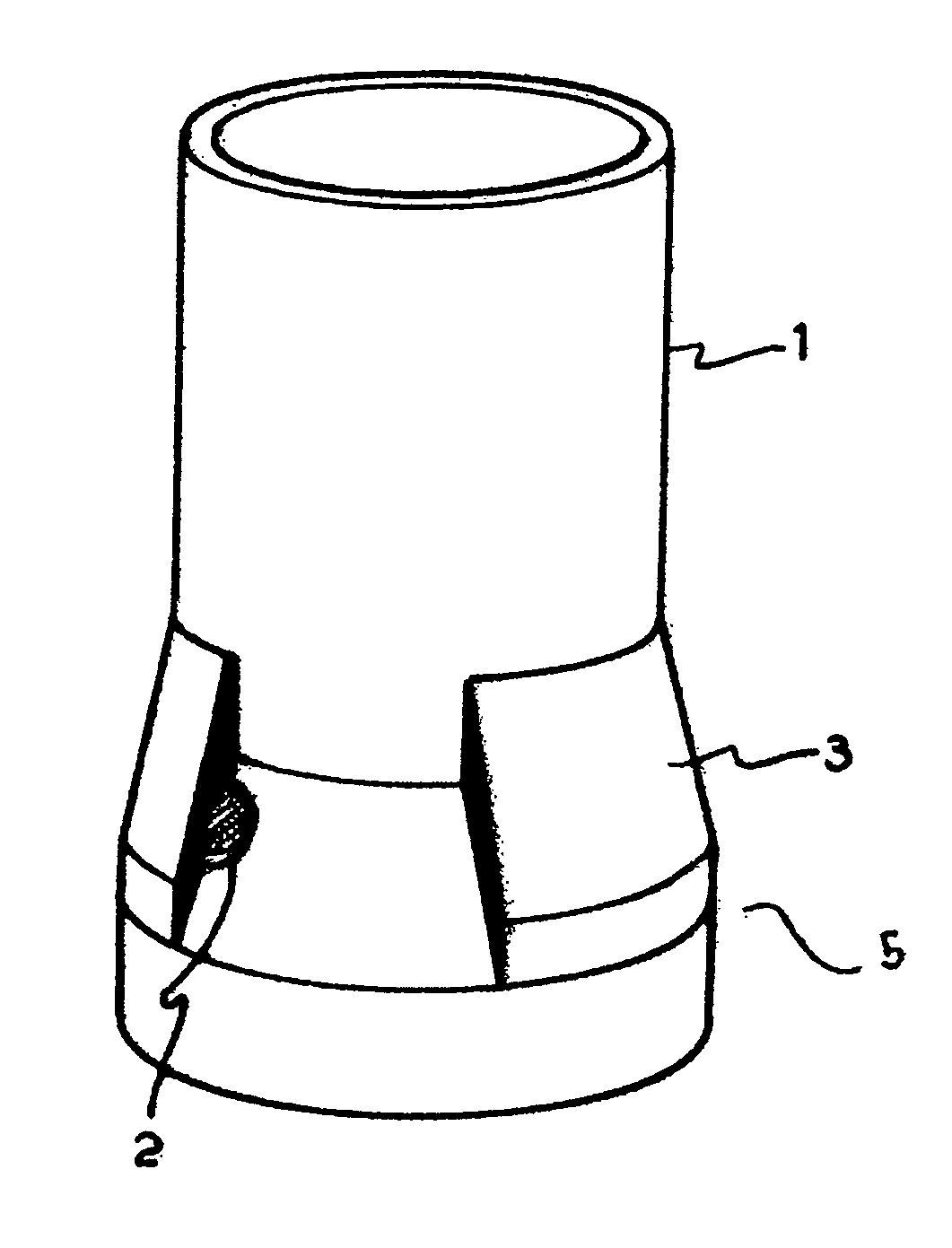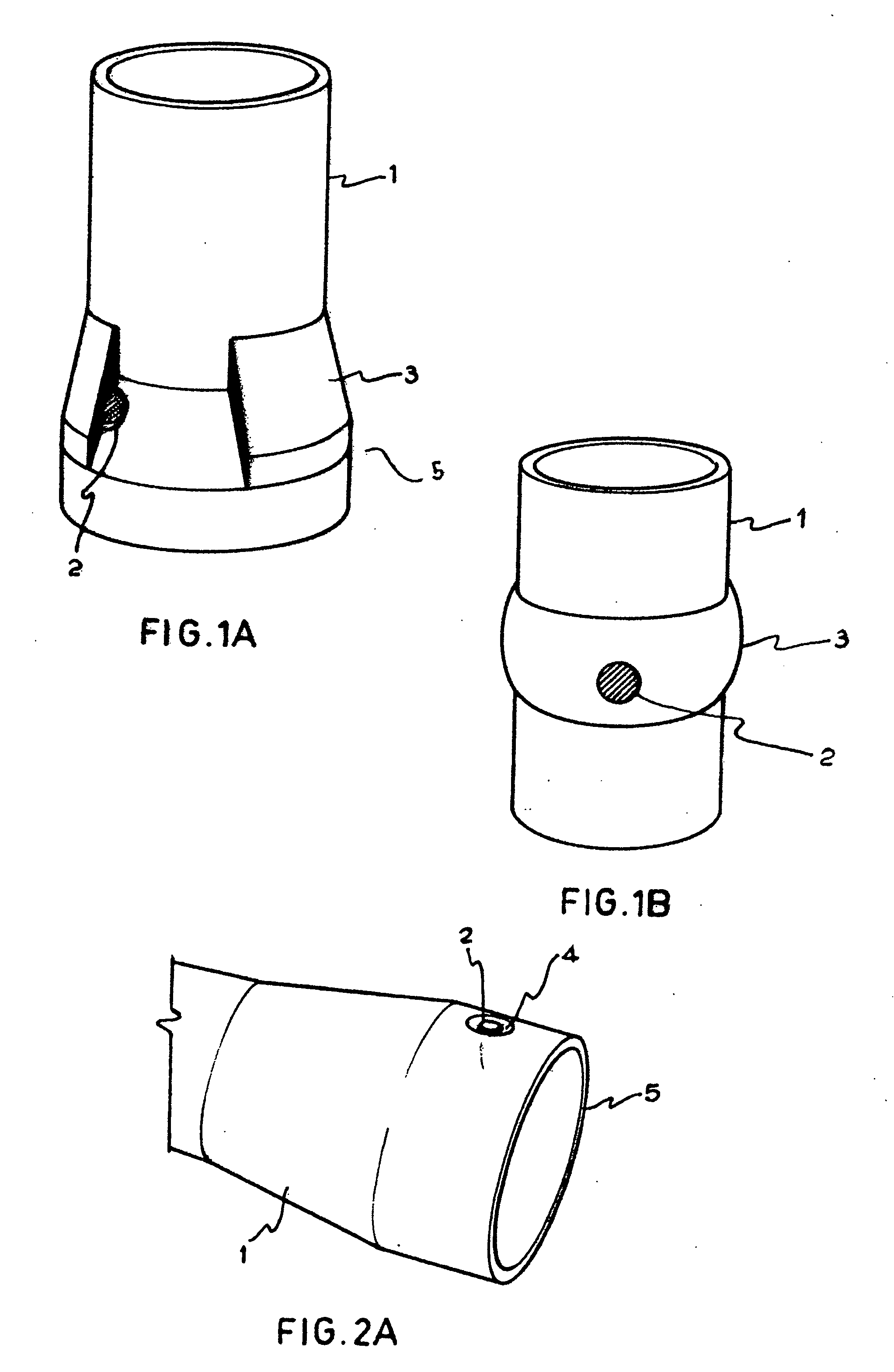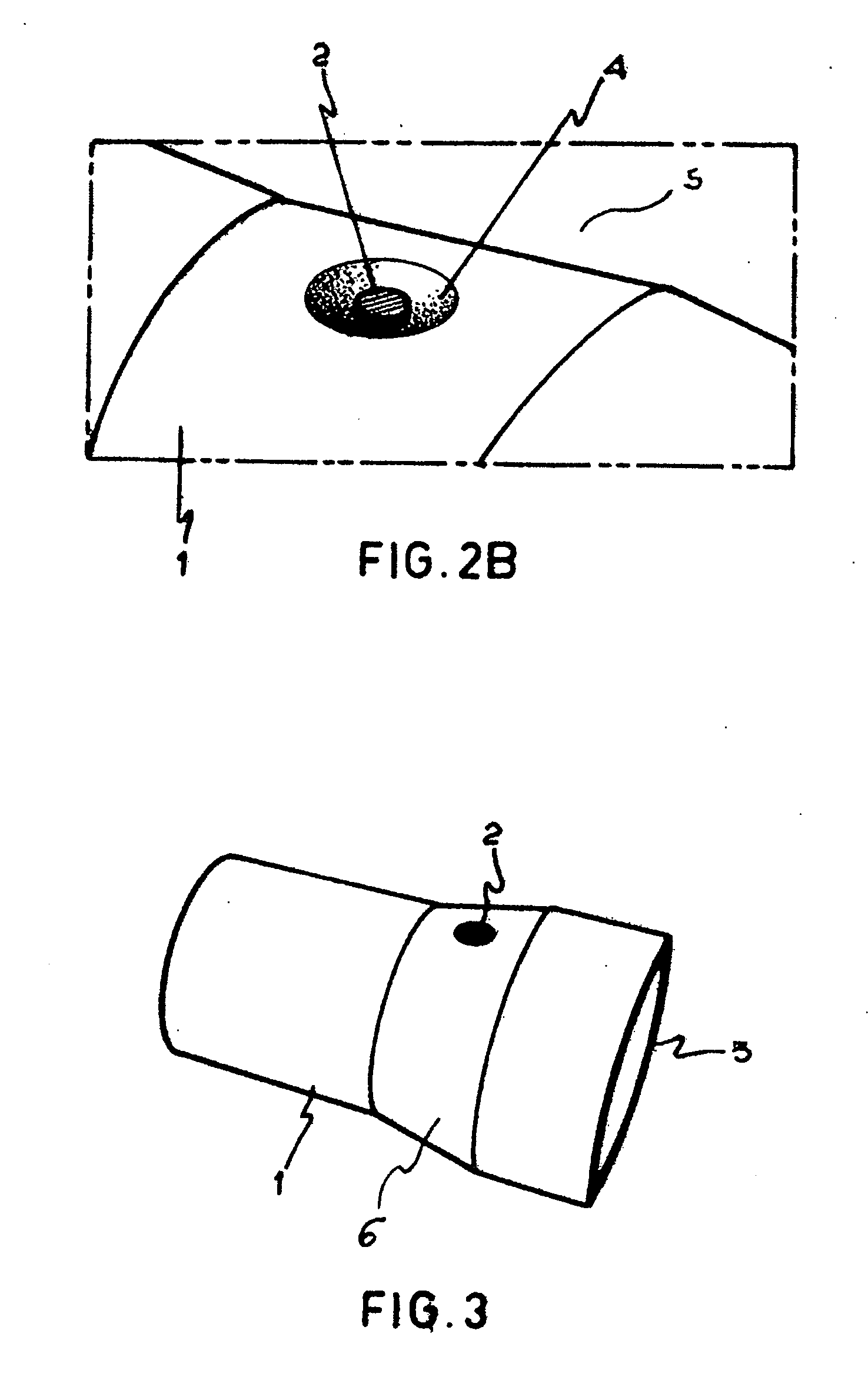Metal tube assembly and radio frequency identification (RFID) tag
a technology of radio frequency identification and metal tubes, which is applied in the field of assembly of metal tubes and radio frequency identification (rfid) labels, can solve the problems of inability to print durable prints on metal tubes, inability to meet the needs of users, so as to reduce the flow resistance, avoid electromagnetic shielding effects of readers, and reduce the effect of separation
- Summary
- Abstract
- Description
- Claims
- Application Information
AI Technical Summary
Benefits of technology
Problems solved by technology
Method used
Image
Examples
Embodiment Construction
[0036]FIG. 1A illustrates a portion of a metal tube 1 which includes an radio-frequency identification (RFID) label 2 on the conical upset region 5 of tube 1. Said label 2 is surrounded by an attachment means such as for example a molded plastic ring 3 which may be injection-molded (when made of thermo-plastic material), casted or made by reaction injection (when made of thermo-rigid material), in such a way that it firmly fixes said label 2 on said metal tube 1. A thermo-shrinkable blanket (not illustrated) could be also used instead of said molded plastic ring 3.
[0037]FIG. 1B illustrates the same molded plastic ring 3 which includes a label 2, but placed on the cylindrical region of tube 1.
[0038] Labels 2 may form a single structure with the different attachment means. In such case same may be included when molding plastic ring 3.
[0039] Molded plastic ring 3 may be thermo-plastic or thermo-rigid, with good mechanical properties and an excellent chemical resistance against the e...
PUM
 Login to View More
Login to View More Abstract
Description
Claims
Application Information
 Login to View More
Login to View More - R&D
- Intellectual Property
- Life Sciences
- Materials
- Tech Scout
- Unparalleled Data Quality
- Higher Quality Content
- 60% Fewer Hallucinations
Browse by: Latest US Patents, China's latest patents, Technical Efficacy Thesaurus, Application Domain, Technology Topic, Popular Technical Reports.
© 2025 PatSnap. All rights reserved.Legal|Privacy policy|Modern Slavery Act Transparency Statement|Sitemap|About US| Contact US: help@patsnap.com



